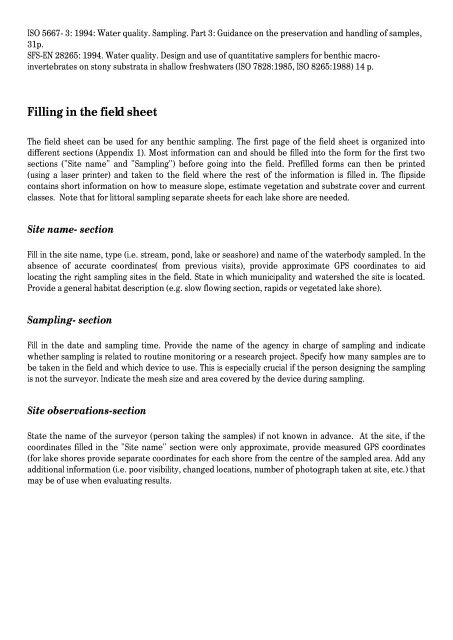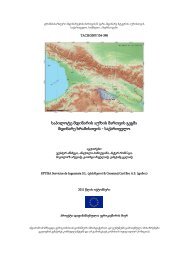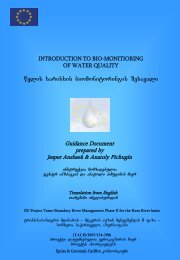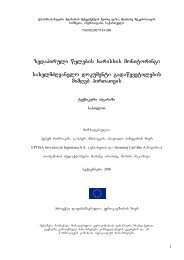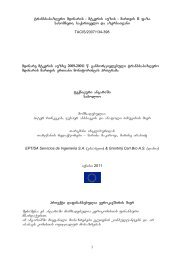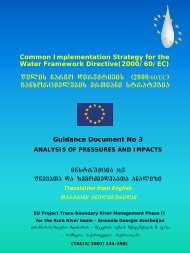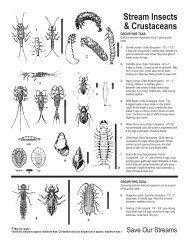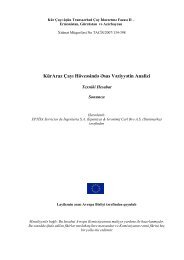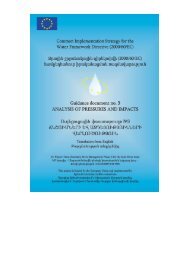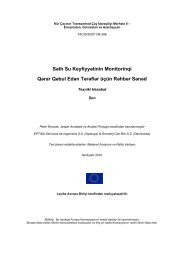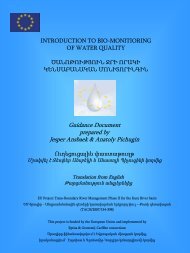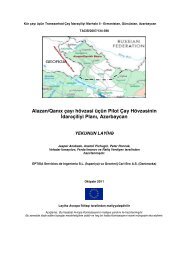SOP Benthos
SOP Benthos
SOP Benthos
Create successful ePaper yourself
Turn your PDF publications into a flip-book with our unique Google optimized e-Paper software.
ISO 5667- 3: 1994: Water quality. Sampling. Part 3: Guidance on the preservation and handling of samples,31p.SFS-EN 28265: 1994. Water quality. Design and use of quantitative samplers for benthic macroinvertebrateson stony substrata in shallow freshwaters (ISO 7828:1985, ISO 8265:1988) 14 p.Filling in the field sheetThe field sheet can be used for any benthic sampling. The first page of the field sheet is organized intodifferent sections (Appendix 1). Most information can and should be filled into the form for the first twosections ("Site name" and "Sampling") before going into the field. Prefilled forms can then be printed(using a laser printer) and taken to the field where the rest of the information is filled in. The flipsidecontains short information on how to measure slope, estimate vegetation and substrate cover and currentclasses. Note that for littoral sampling separate sheets for each lake shore are needed.Site name- sectionFill in the site name, type (i.e. stream, pond, lake or seashore) and name of the waterbody sampled. In theabsence of accurate coordinates( from previous visits), provide approximate GPS coordinates to aidlocating the right sampling sites in the field. State in which municipality and watershed the site is located.Provide a general habitat description (e.g. slow flowing section, rapids or vegetated lake shore).Sampling- sectionFill in the date and sampling time. Provide the name of the agency in charge of sampling and indicatewhether sampling is related to routine monitoring or a research project. Specify how many samples are tobe taken in the field and which device to use. This is especially crucial if the person designing the samplingis not the surveyor. Indicate the mesh size and area covered by the device during sampling.Site observations-sectionState the name of the surveyor (person taking the samples) if not known in advance. At the site, if thecoordinates filled in the "Site name" section were only approximate, provide measured GPS coordinates(for lake shores provide separate coordinates for each shore from the centre of the sampled area. Add anyadditional information (i.e. poor visibility, changed locations, number of photograph taken at site, etc.) thatmay be of use when evaluating results.


